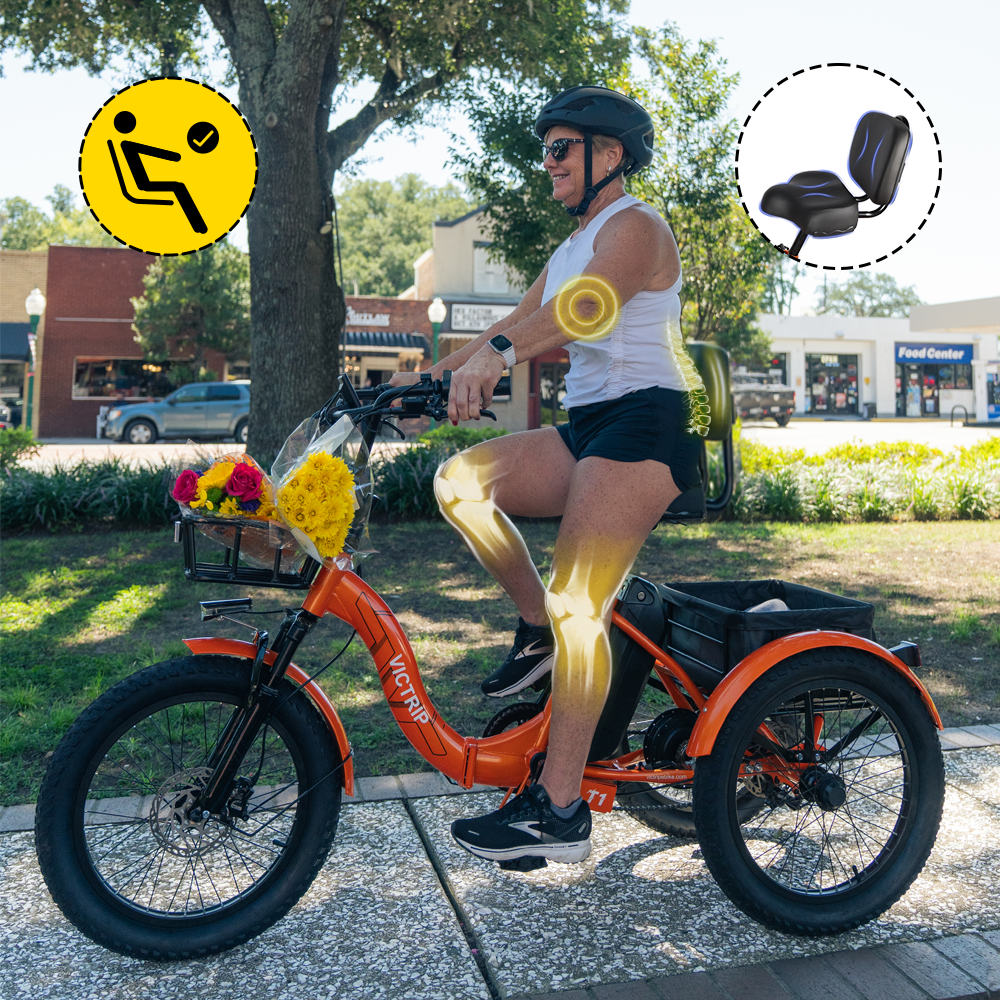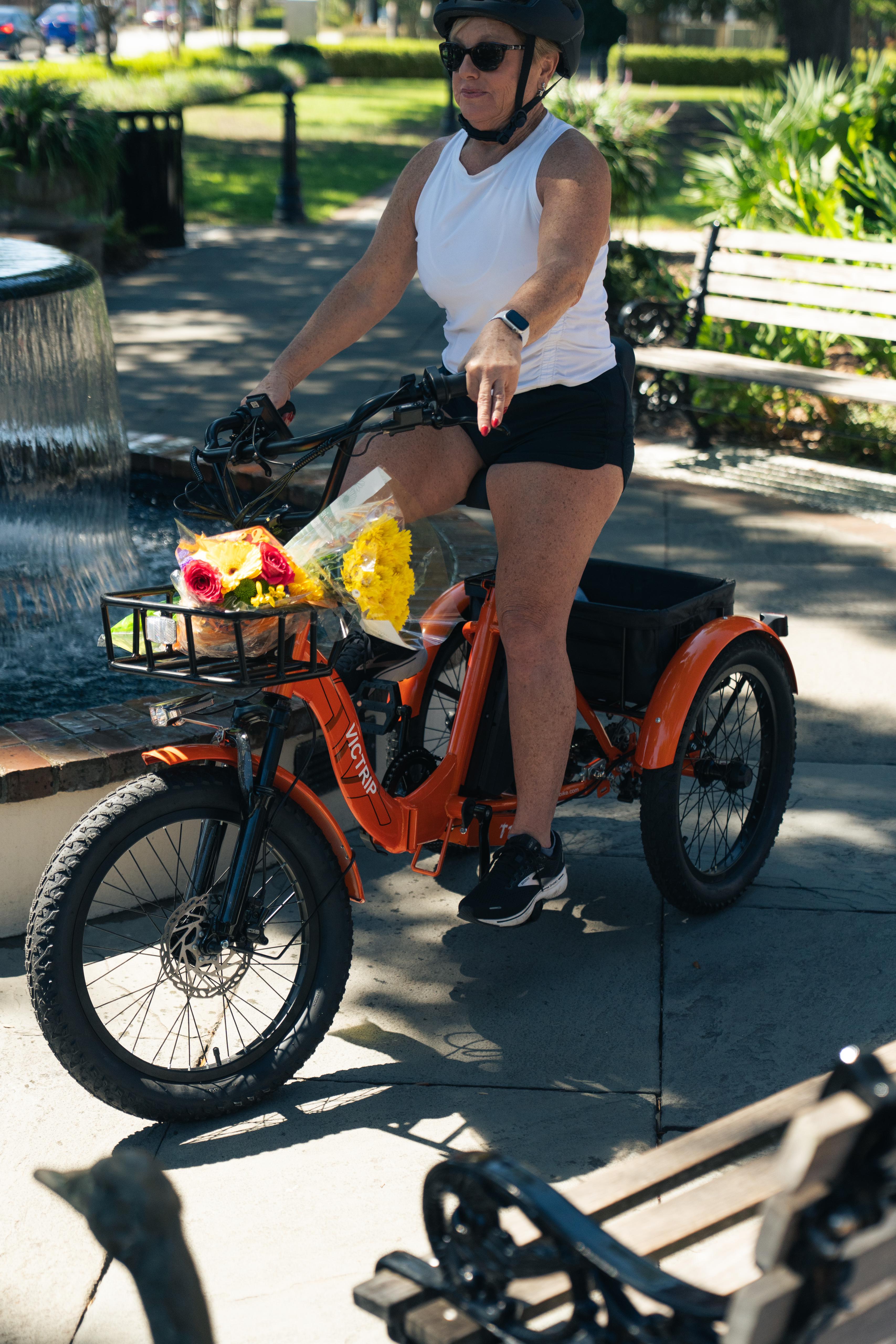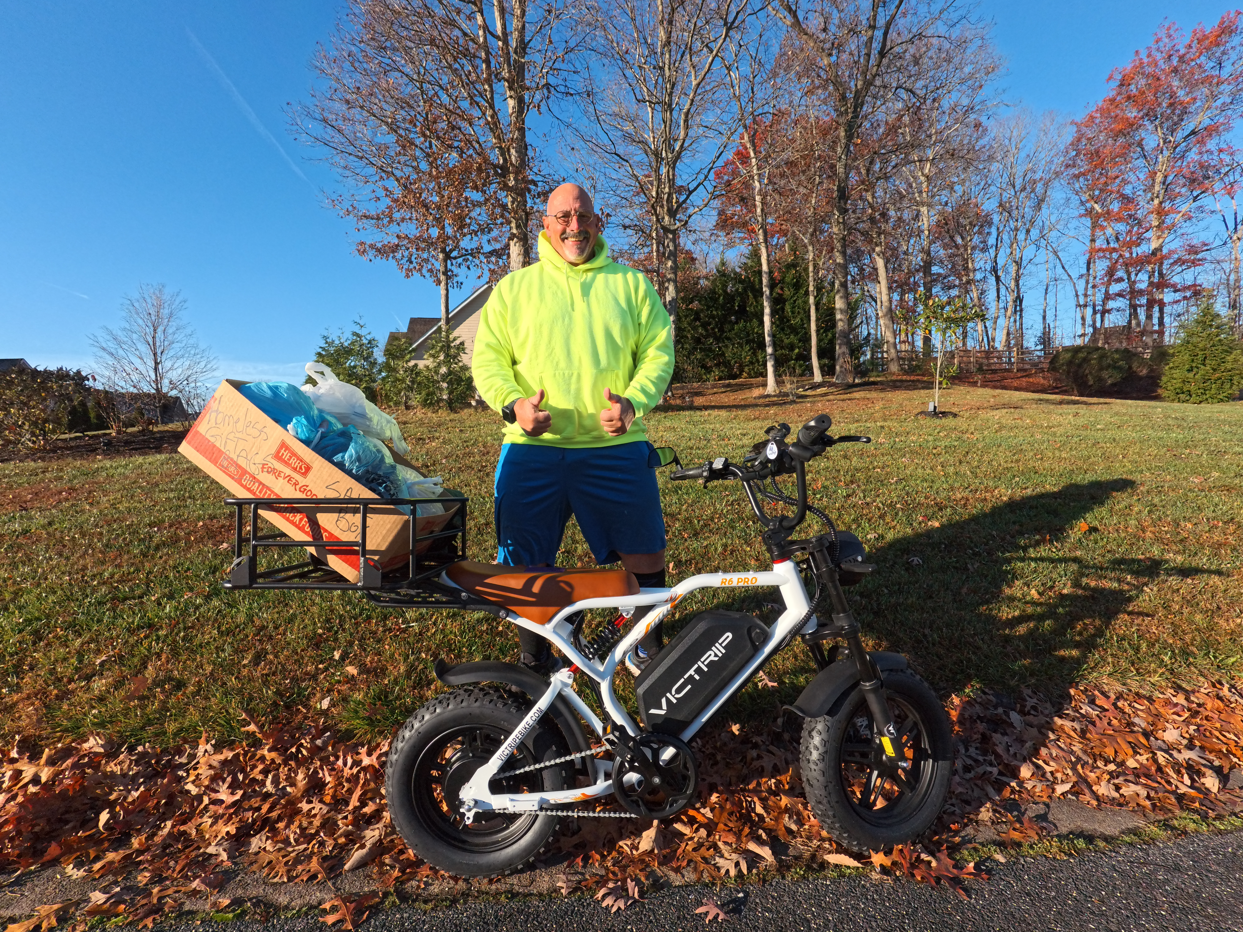
When people talk about low-impact transport, two options keep coming up: adult tricycles and e-bikes. Adult trikes are praised for stability and comfort, while e-bikes are winning over commuters with speed and range. In short, this comparison — Adult Tricycles vs. E-bikes — helps you pick the right machine for your priorities.
Whether you want to haul groceries, get more exercise, or reclaim your commute, there are real tradeoffs. Below, we’ll walk through seven powerful differences and give practical guidance so you can decide with confidence.
Design & structure
Frame geometry and wheel layout
The most obvious visual difference is wheel layout. Adult tricycles usually have two wheels at the rear (or sometimes two at the front) and one at the front — that extra wheel gives a wider base and much more lateral stability when stopped or moving slowly. E-bikes, by contrast, look like traditional bicycles with two wheels; the motor and battery are integrated into the frame, rack, or hub.
Why it matters: tricycles are inherently stable at low speeds and when stopped — great for riders who worry about balancing — while e-bikes keep a narrower profile, which helps with lane positioning and maneuvering through tighter spaces.
Materials and build quality
Both categories come in steel, aluminum, and sometimes carbon or alloy blends. Trikes often need heavier, reinforced frames to handle loads and the different weight distribution; that can make them heavier overall. E-bikes add motor and battery weight but often retain lighter frame choices because the motor helps offset that extra mass.
In practical terms: if you want maneuverability and light weight, an aluminum e-bike frame is common. If you want a rock-solid platform for cargo and comfort, a steel trike frame is typically more robust.
Power source & assistance
Types of e-bike motors
E-bikes rely on three main motor placements: front hub, rear hub, and mid-drive. Mid-drive motors offer better hill-climbing and use the bike’s gears efficiently, while hub motors are simpler and usually cheaper. Motor power and assistance levels vary — some provide gentle “pedal assist,” others let you throttle independently.
Drive and gearing on tricycles
Traditional tricycles are human-powered, using derailleurs or internal hub gears. Some modern trikes come in e-assisted versions (electric trikes) that marry the stability of a trike with the convenience of a motor. The VICTRIP T1 Foldable Electric Tricycle is a great example, offering the low-speed stability of three wheels with the boost of electric power for hills and heavier loads.
Bottom line: if motorized assistance matters, compare torque rating (in Nm), battery capacity (Wh), and whether you want pedal-assist only or throttle capability.
Speed, range & performance
Urban commuting
E-bikes normally beat non-motorized trikes in average speed. A typical e-bike commuter averages 15–20 mph on flat urban routes with pedal assist — more than most manual trikes. That makes e-bikes superior for time-sensitive commuting. Models like the Titan S Long Range Electric Bike are designed specifically for extended range, making them ideal for daily riders covering significant distances.
TOP PICK

VICTRIP®TITAN S Foldable Ebike
Hills and load carrying
If you need to climb hills or carry heavy loads, e-bikes (especially mid-drive) generally outperform manual trikes. However, an electric tricycle (a motorized trike) combines both strengths: you get the stability of a trike plus the motor torque for hills and cargo. Note: heavy trike frames can slow acceleration and reduce range because of extra mass.
Practical tip: match battery capacity to your trip length. If you regularly do 20+ miles, pick a battery rated accordingly (higher Wh).
Comfort, accessibility & ergonomics
Seating, mounting, and stability
Trikes usually have more upright seating and a low, stable center of gravity. That upright posture is gentler on the back and neck and makes mounting/dismounting easier — a big plus for older adults or people with balance issues. E-bikes tend to mirror bike ergonomics — sporty models are more forward-leaning, though cruiser e-bikes exist with upright seating too.

Adaptive and medical-use considerations
Tricycles can be adapted more easily for medical needs (larger seats, backrests, cargo boxes). They’re commonly recommended for users who require extra stability. E-bikes can also be adapted, but balancing a two-wheel vehicle may still pose a barrier for some riders.
If accessibility is a top concern, a trike’s stability and step-through designs often make it the safer, more comfortable choice.
Cost, ownership & maintenance
Purchase price comparison
Generally, entry-level manual adult tricycles fall into a modest price range, but purpose-built cargo trikes or high-quality models can be pricier. E-bikes start higher due to motor and battery costs; a reliable commuter e-bike typically costs more than a basic trike. Electric trikes (motorized tricycles) can be the most expensive because they combine heavy frames with motor systems.
Ongoing costs: batteries vs. mechanical wear
E-bikes bring battery lifecycle costs — expect to replace a battery every 3–7 years depending on use. Batteries also require safe charging and might degrade in extreme climates. Tricycles, especially manual ones, have lower ongoing costs: chains, tires, and brake maintenance are typical. If you choose an electric option (e-bike or electric trike), factor in charging costs, potential motor repairs, and battery replacement.
Money-smart advice: weigh purchase price against how much you’ll use the bike. A more expensive e-bike that replaces a car commute may save money long term.
Storage, transport & portability
Folding and disassembly options
E-bikes can be found in folding models; they’re easier to store in apartments or trunk space. Adult tricycles are bulkier and harder to fold — fewer folding trike options exist, and they still take more space. If storage or trunk transport is a constraint, a folding e-bike usually wins.
Parking and theft concerns
E-bikes are prime targets for theft because of their resale value. Invest in good locks and secure parking. Trikes can be heavy and awkward to steal, which can be a deterrent; however, they’re harder to bring inside. If you can garage your ride, that’s safest.
Environmental impact & lifecycle
Energy consumption and emissions
Manual tricycles have the smallest operational environmental footprint — human power only. E-bikes consume electricity; however, per mile they produce much lower emissions than cars, even when electricity comes from fossil fuels. Battery production and disposal are the major environmental concerns with e-bikes.
End-of-life: battery recycling and frame longevity
Batteries contain valuable metals and should be recycled at proper facilities. Frames (steel, aluminum) are highly recyclable. Choosing brands with battery take-back programs reduces environmental harm. If sustainability is a priority, consider a manual trike or an e-bike with a long-life, replaceable battery.
Choosing the right option for you
Commuter, leisure, cargo, and mobility use cases
-
Commuter (time-sensitive): e-bike likely best.
-
Short grocery runs & stability needs: manual trike is great.
-
Heavy cargo/family hauling: cargo trike or electric cargo e-bike.
-
Mobility and balance concerns: adult tricycle (manual or electric trike) is ideal.
Think about your typical route, storage options, fitness goals, and whether you’d prefer steady exercise or assisted speed. Also ask: will you ride in mixed traffic? Do you need to park securely? Are there steep hills?
Safety considerations & legal notes
Wear a helmet, use lights and high-visibility clothing, and learn local traffic laws — many places limit e-bike speed classes or require specific rules for electric vehicles. Tricycles have different handling dynamics: they corner differently and can tip if turned too sharply at speed. Practice in a safe area before taking unfamiliar equipment into traffic.
Legal note: check local regulations for e-bike classifications (Class 1, 2, 3), legal speed limits, and whether e-trikes fall under bicycle or motorized vehicle rules.
Real-life user experiences & examples
-
Sarah, a 62-year-old commuter, switched to an electric trike for knee comfort and finds it transformed her independence — she can carry shopping and no longer worries about balancing at stops.
-
Marcus, a city worker, chose an e-bike to shave 20 minutes off his commute and keep sweat to a minimum; he stored the folding e-bike indoors in his apartment.
-
A small business owner uses a cargo trike for local deliveries — it’s slower than a van but cheaper to operate and far easier to park.
These anecdotes show there's no single “best” choice — the right ride follows from your use case.
Conclusion & recommendations
Both adult tricycles and e-bikes have clear strengths. If your top priorities are balance, comfort, and stability — especially for grocery runs, medical needs, or low-speed urban trips — an adult tricycle (or an electric trike) is an excellent choice. If you prioritize speed, commuting range, and maneuverability in mixed traffic, an e-bike usually wins.
My practical recommendation: list your typical ride (distance, terrain, cargo, storage), then choose the category that best fits those needs. Try a test ride: handling feels very different in real life. When in doubt, prioritize safety and accessibility — you’ll use the bike more and enjoy it longer.
FAQs
Which is better for seniors: adult tricycles or e-bikes?
For most seniors with balance or mobility concerns, adult tricycles are safer because they don’t require balancing at low speeds. If a senior wants pedal assistance plus the stability of three wheels, an electric tricycle is a top option.
Can I convert a regular tricycle into an e-trike?
Yes — conversion kits exist that add a hub motor and battery to a trike, but installation requires mechanical skill and attention to braking and frame strength. Some frames are better suited to conversion than others.
Are tricycles slower than e-bikes?
Manual tricycles are generally slower than e-bikes with active pedal assist. Electric tricycles can reach speeds comparable to e-bikes, depending on motor class and local speed limits.
Which costs more to insure or register?
Insurance and registration depend on local laws and whether the vehicle is classed as a bicycle or motor vehicle. Many places don’t require registration for Class 1 e-bikes, but electric trikes with higher power may fall under different rules. Always check local requirements.
Do tricycles tip over easily?
When ridden correctly at intended speeds, modern adult trikes designed for adults are stable. Tipping risk increases with sharp, fast turns, high center of gravity (heavy cargo placed high), or uneven surfaces. Practice and safe loading reduce risk.




Share:
How Fast & How Far Can eTrikes Go?
Hub Drive vs Mid Drive: Which eBike Motor Is Better?